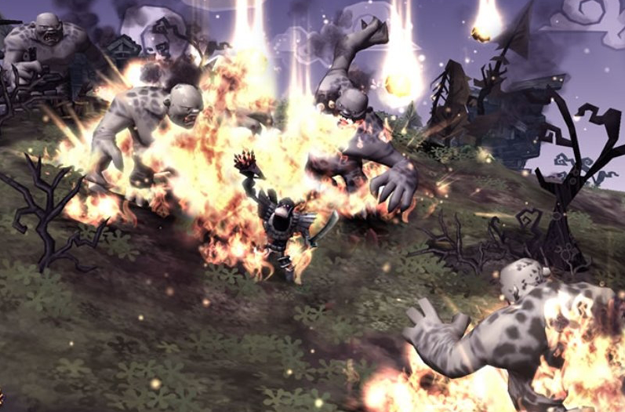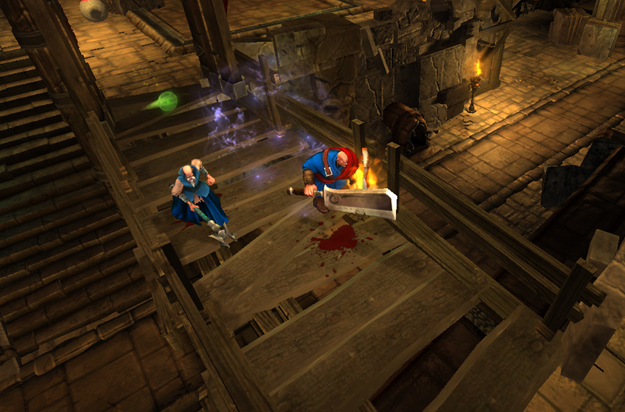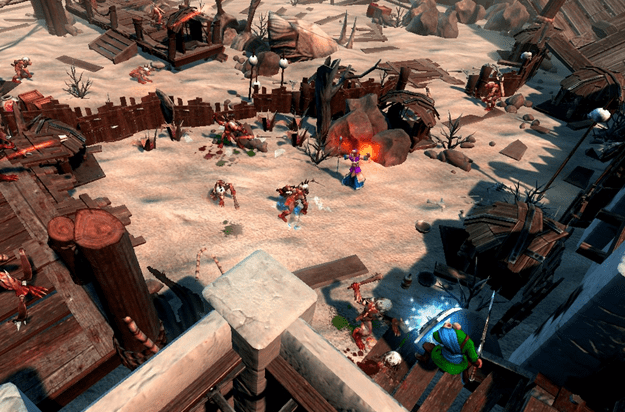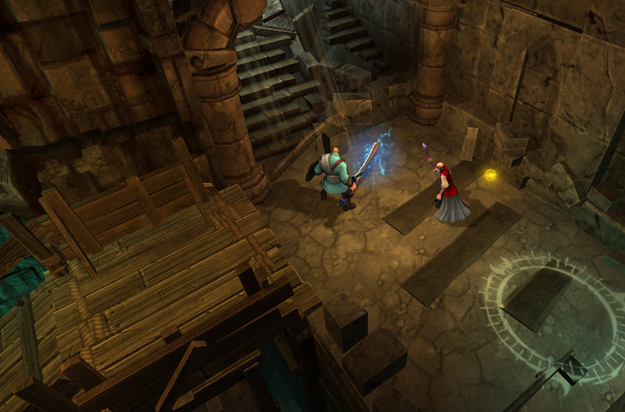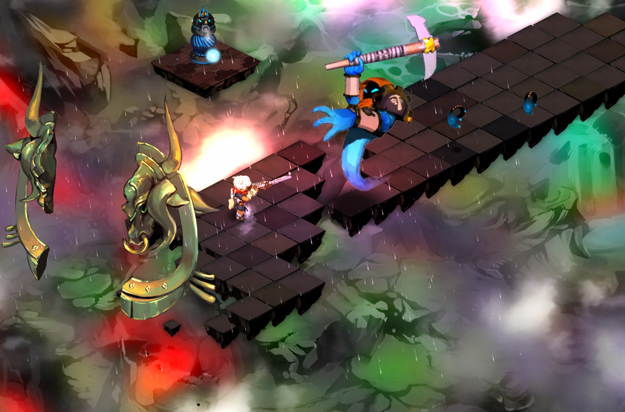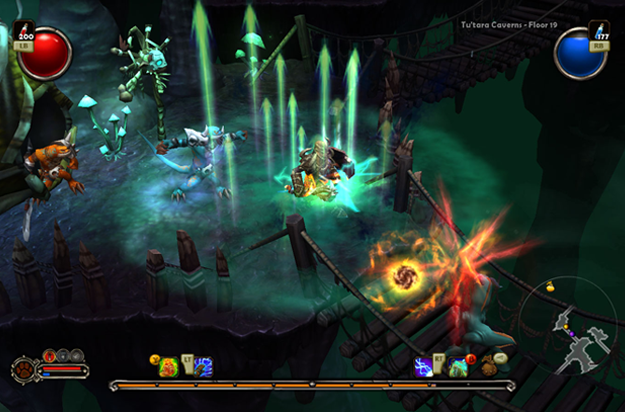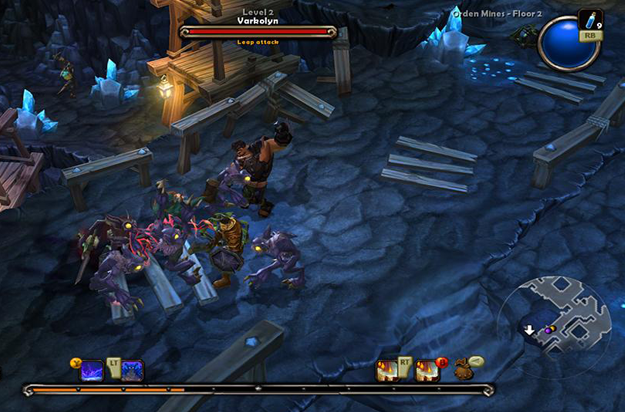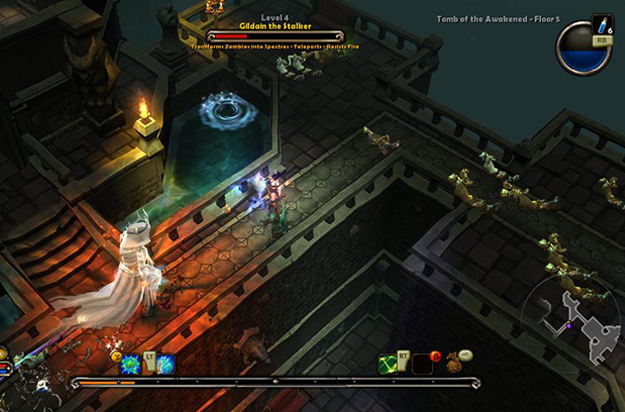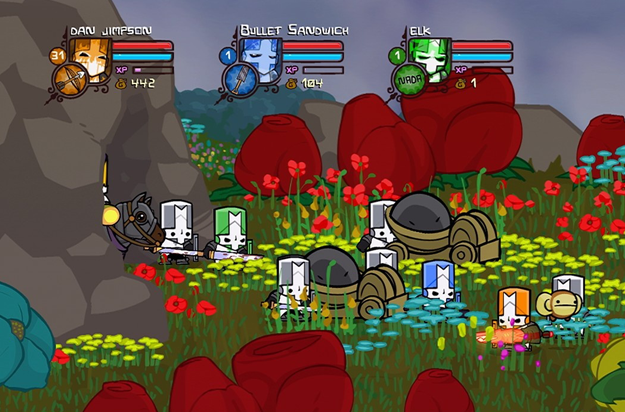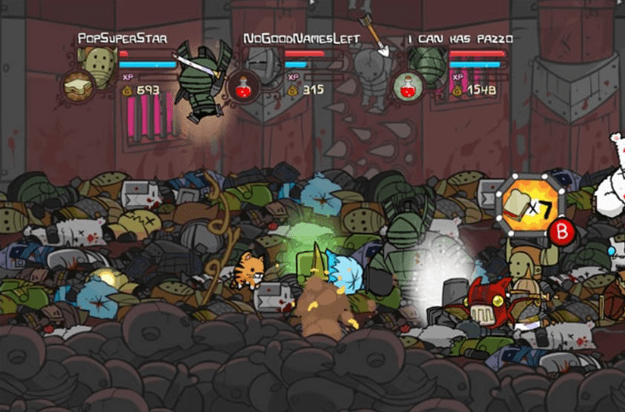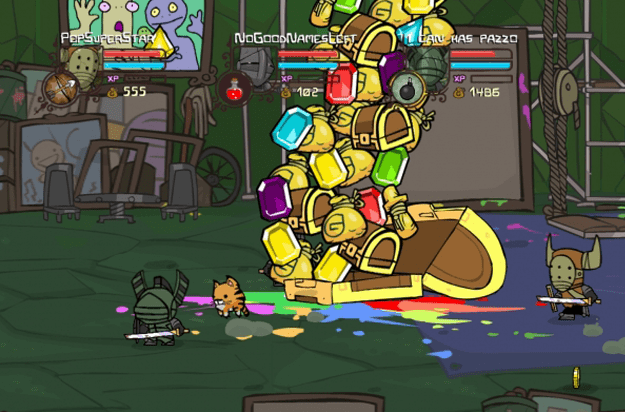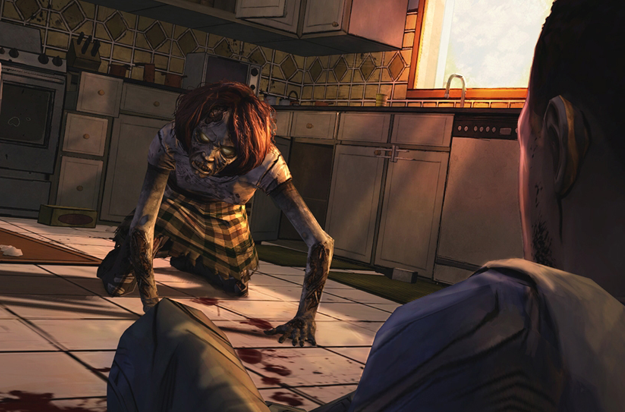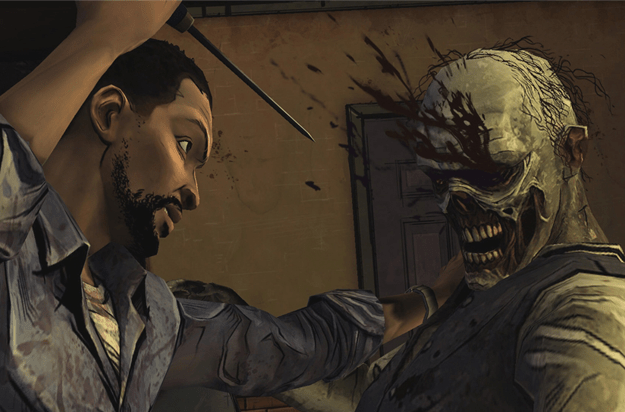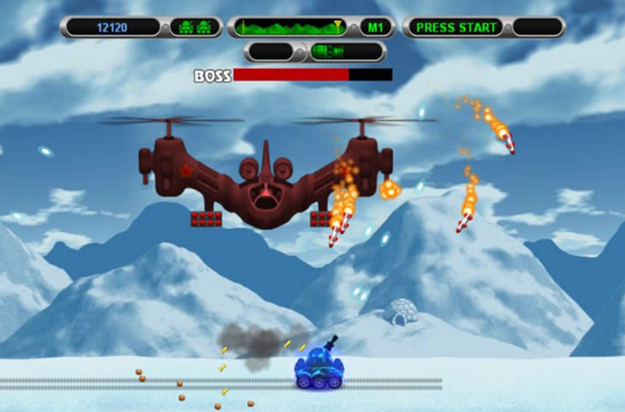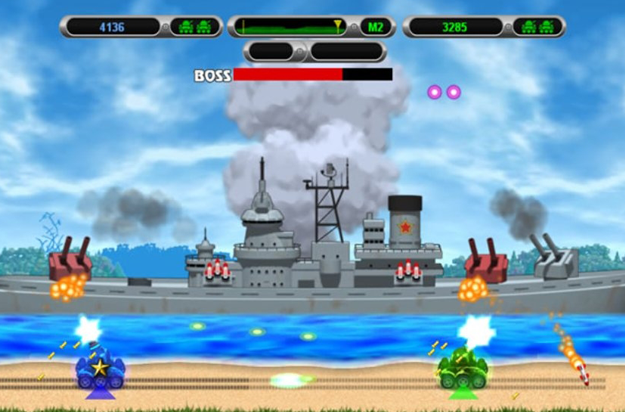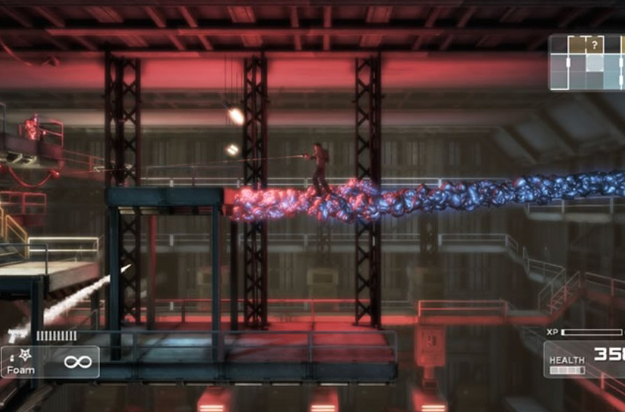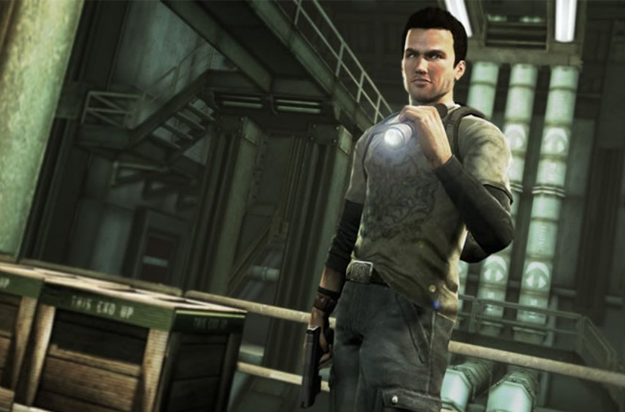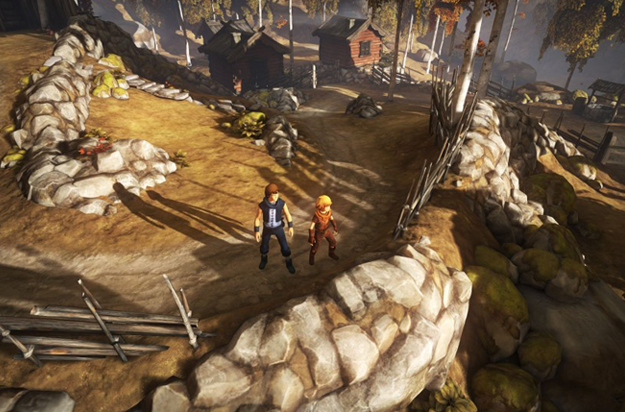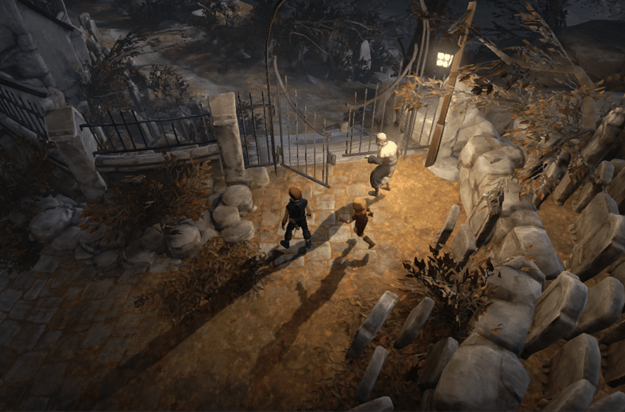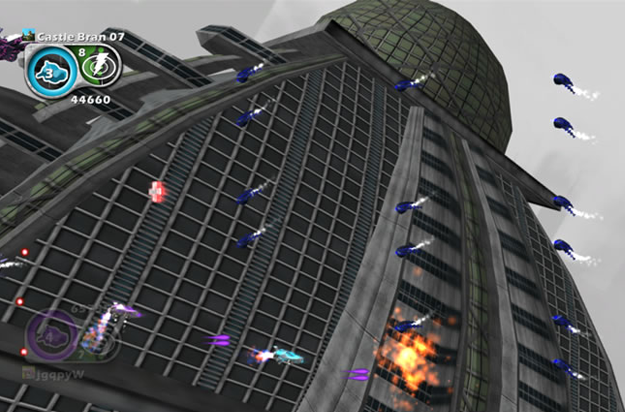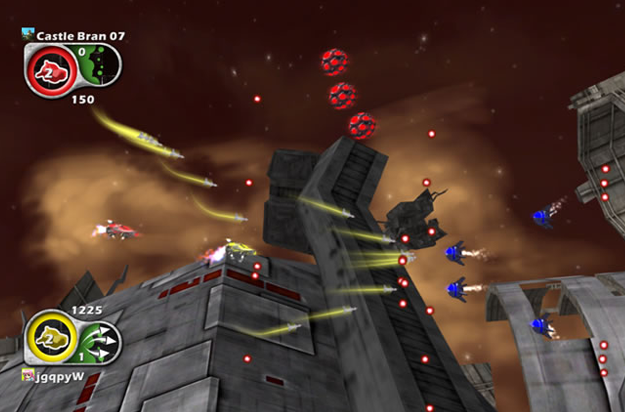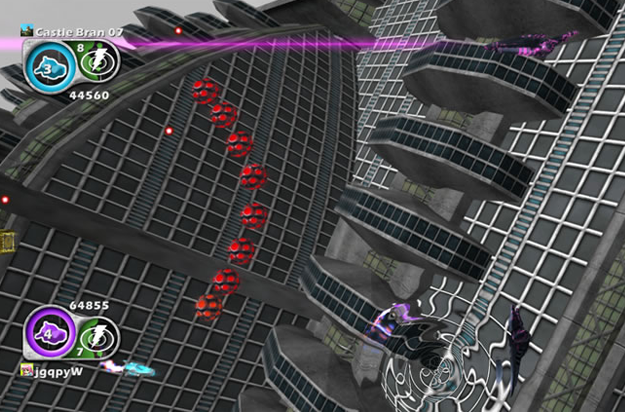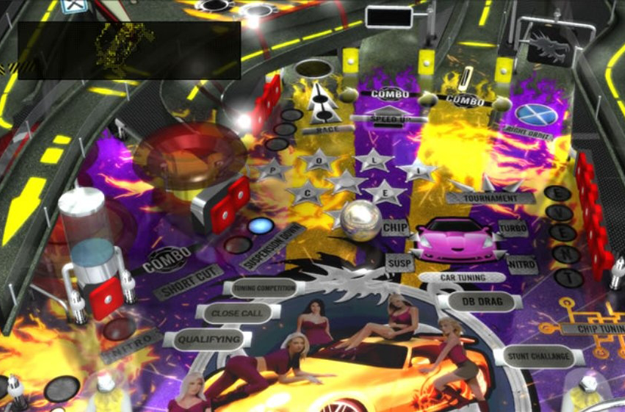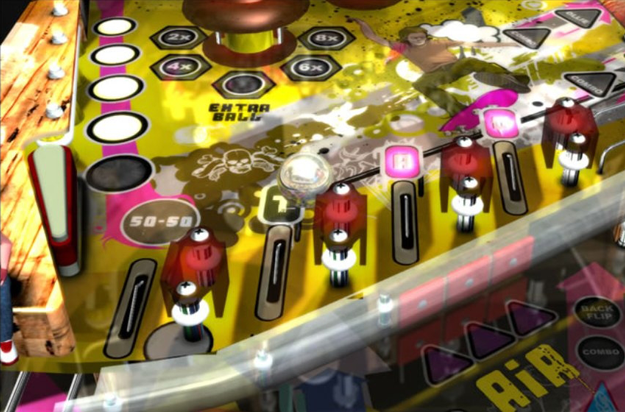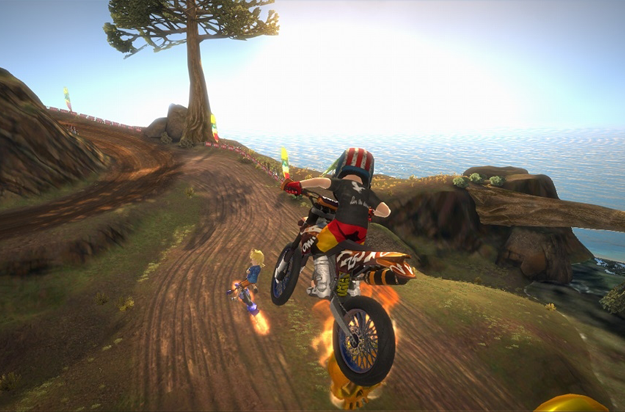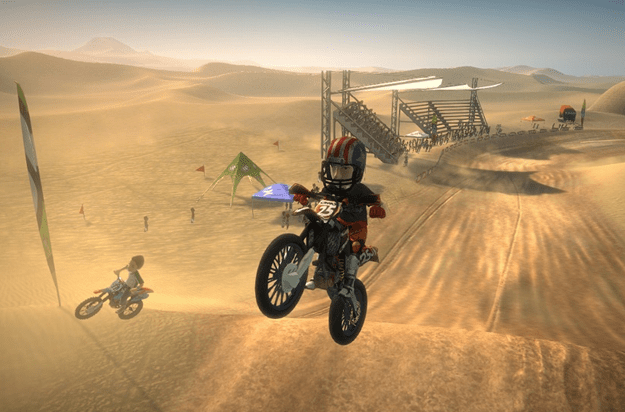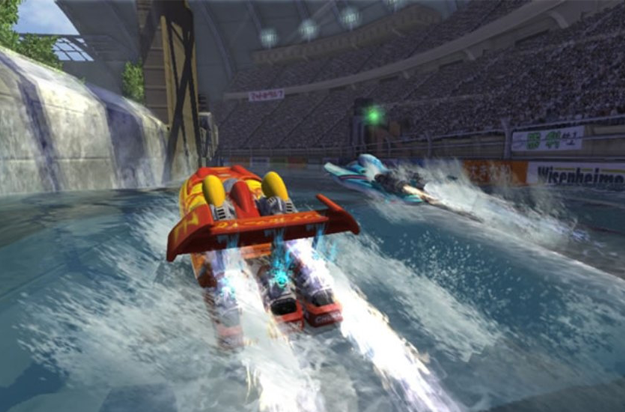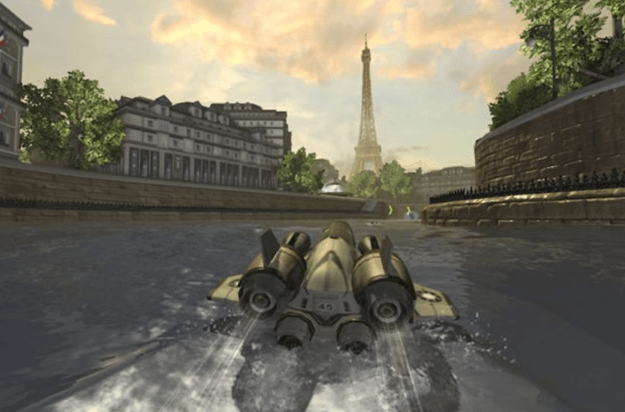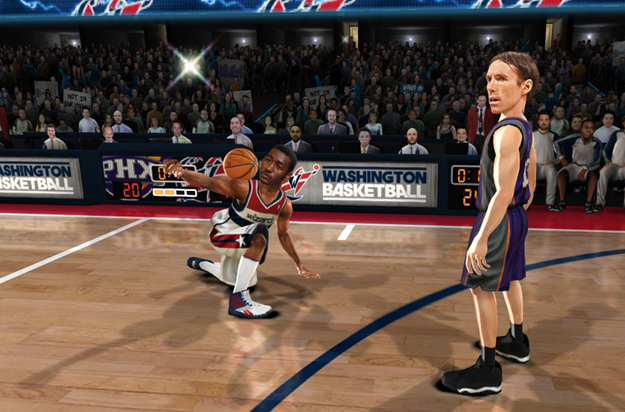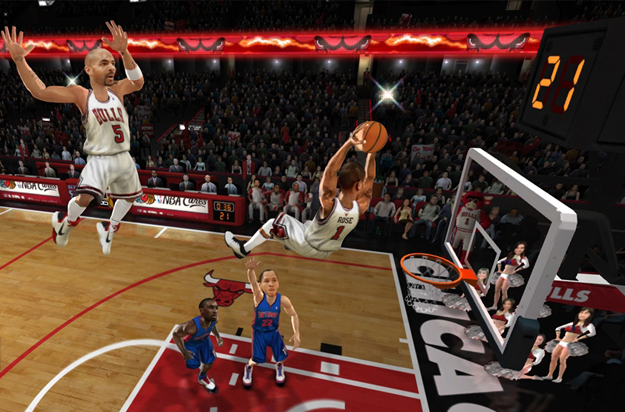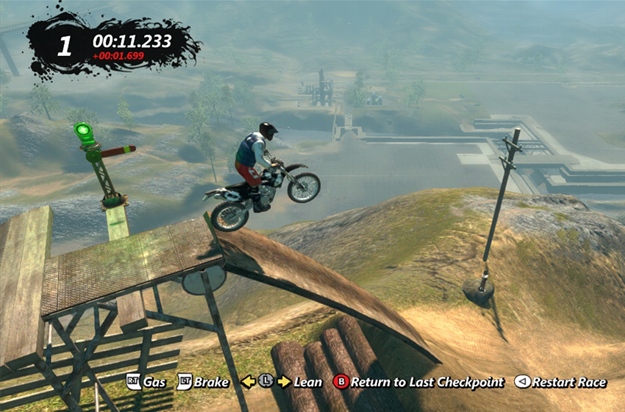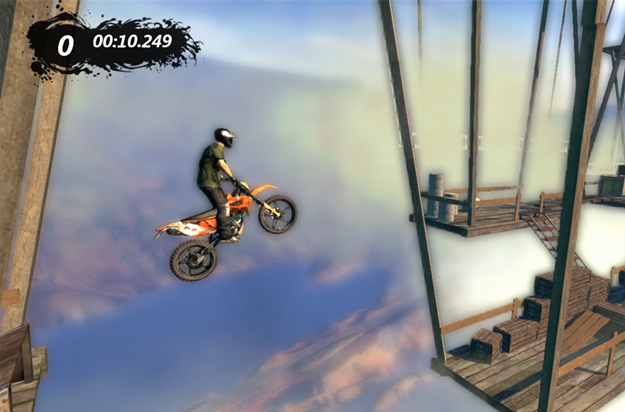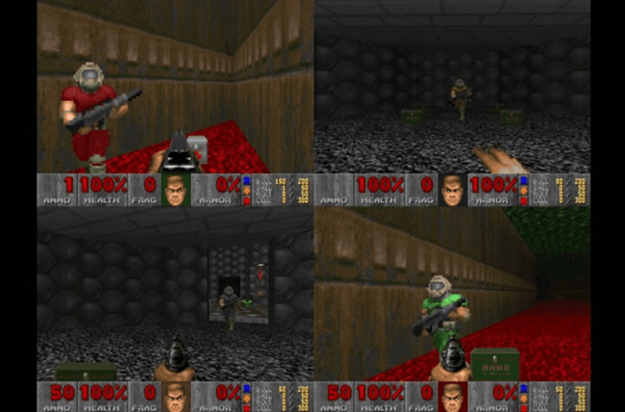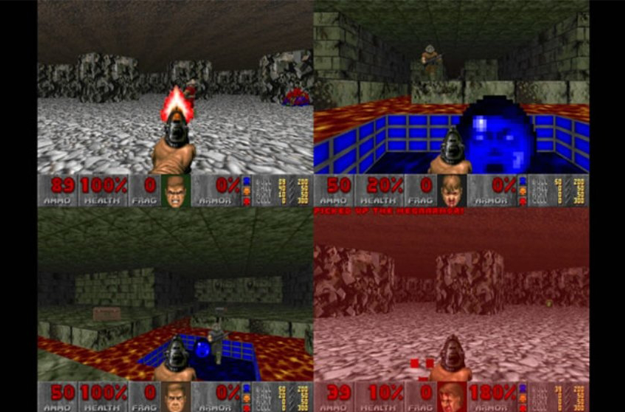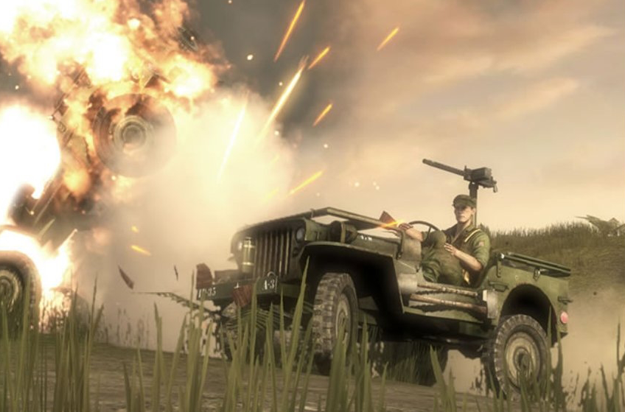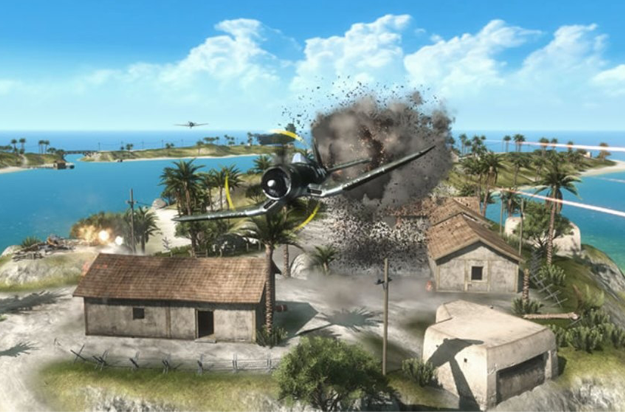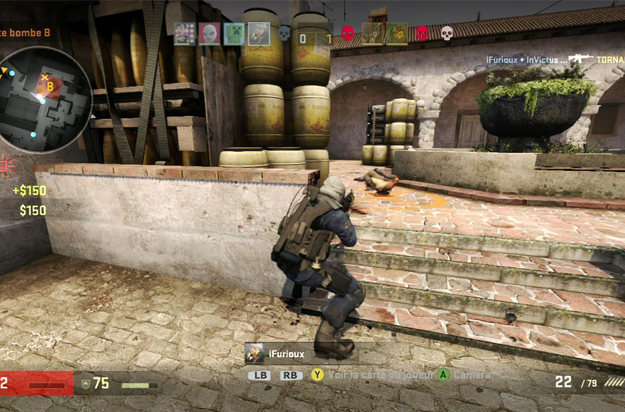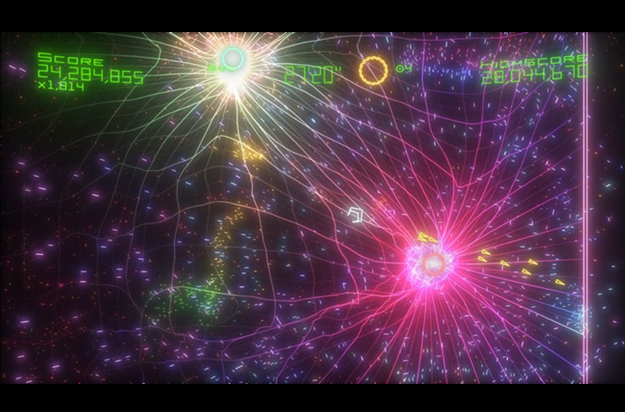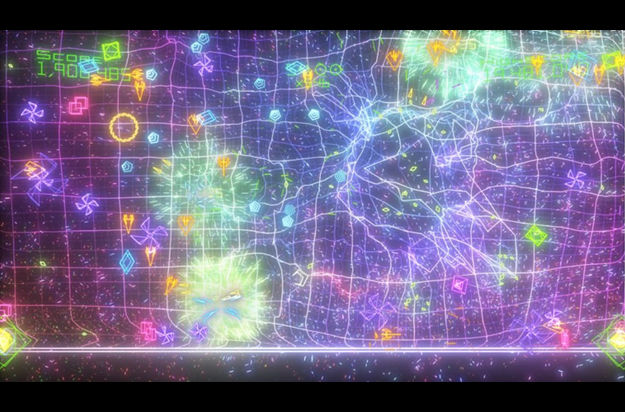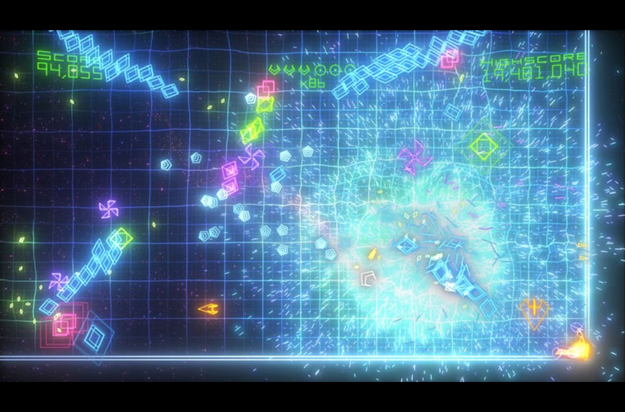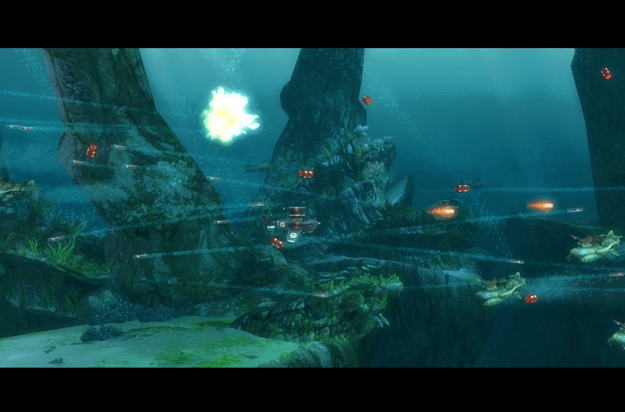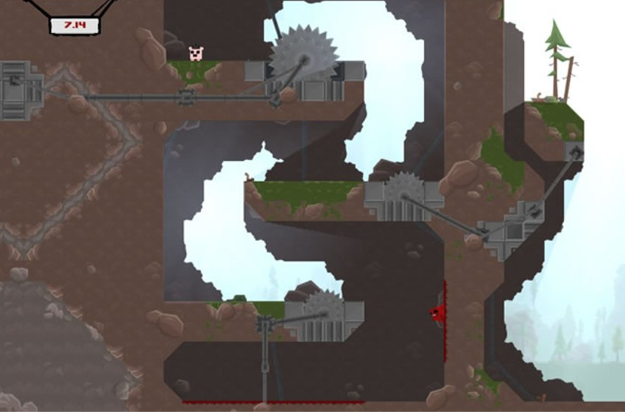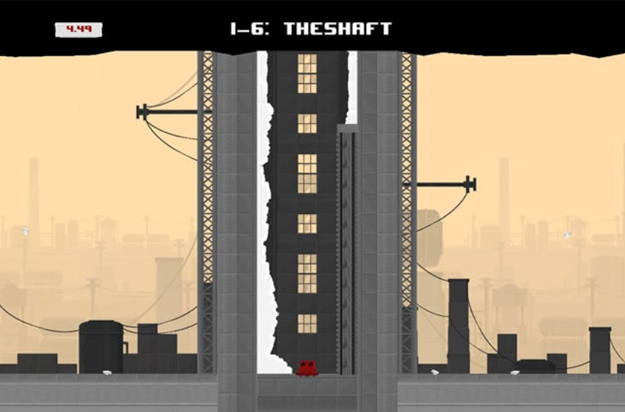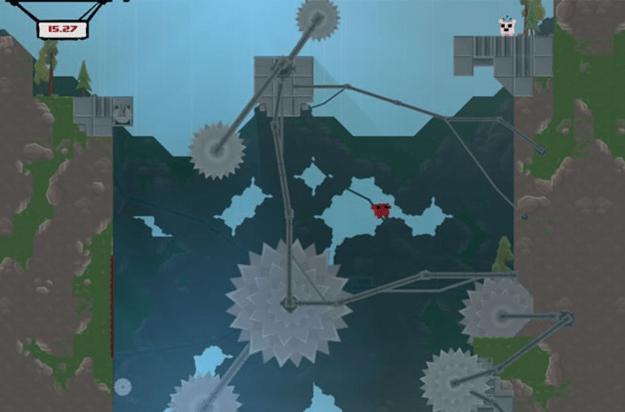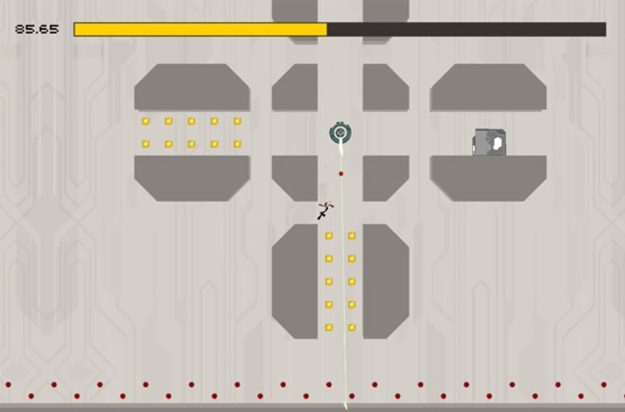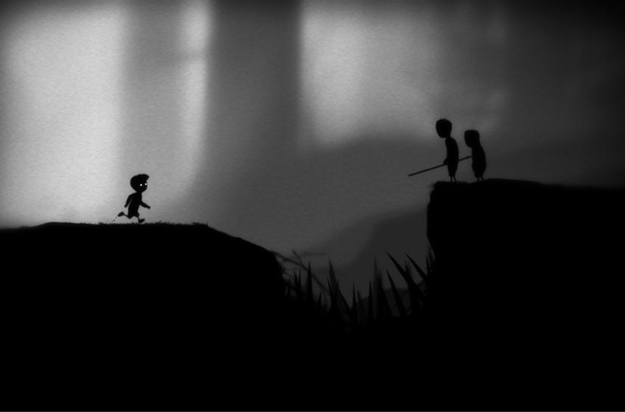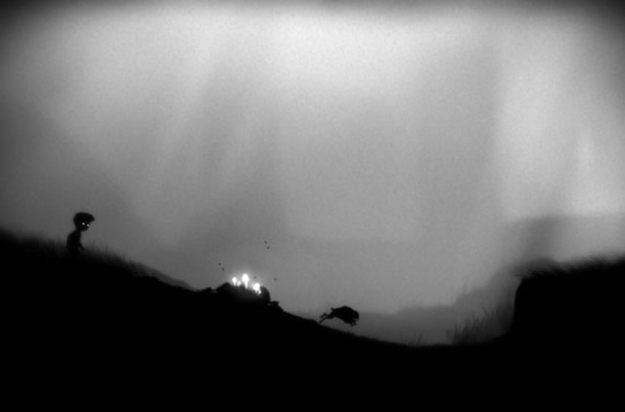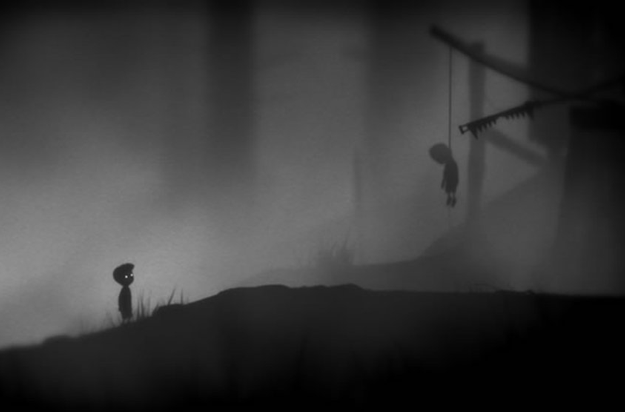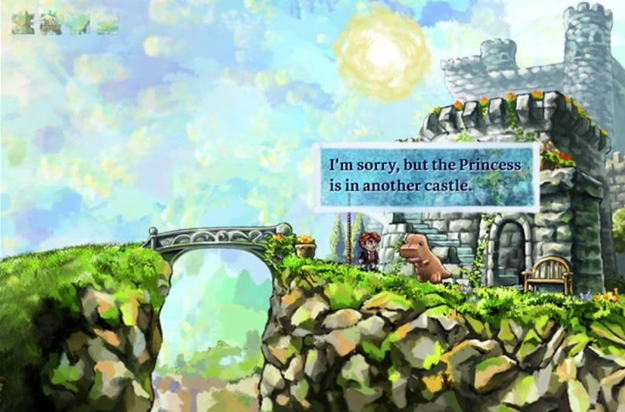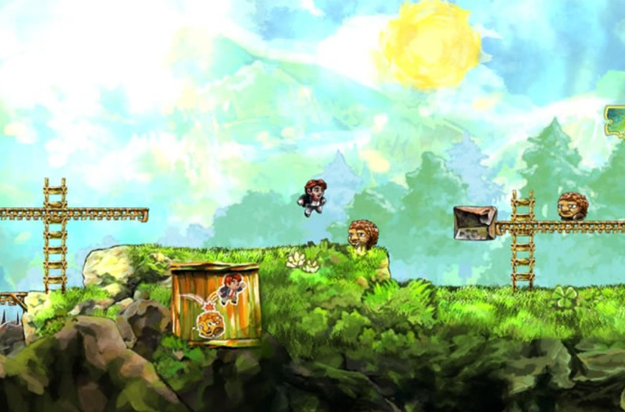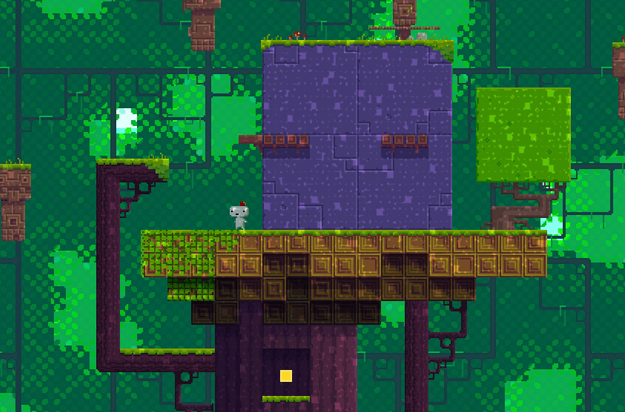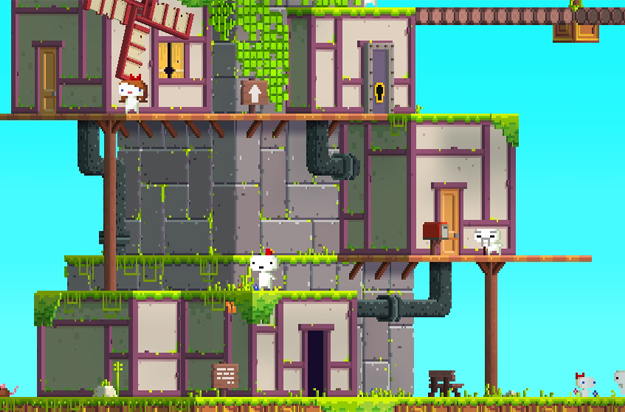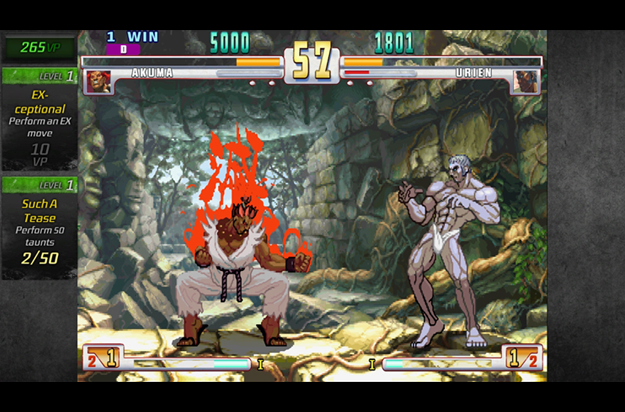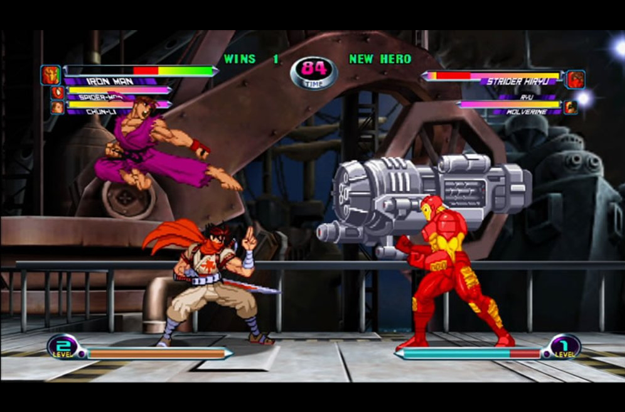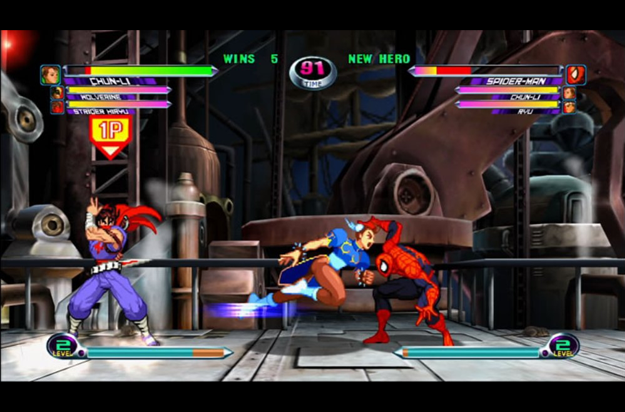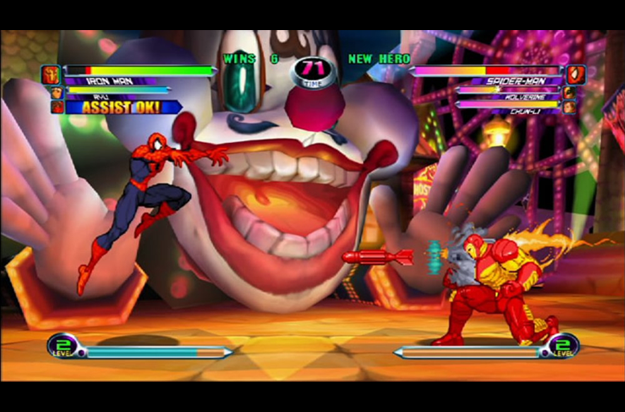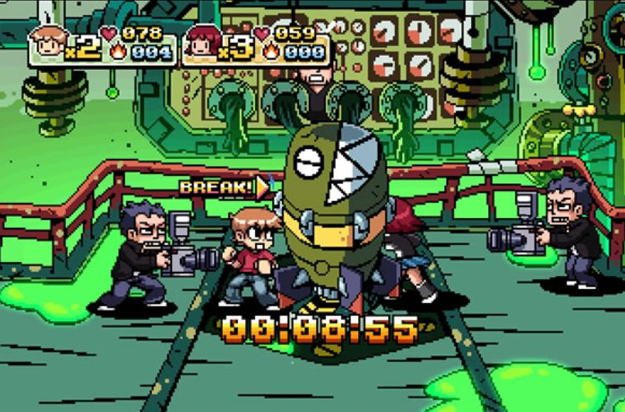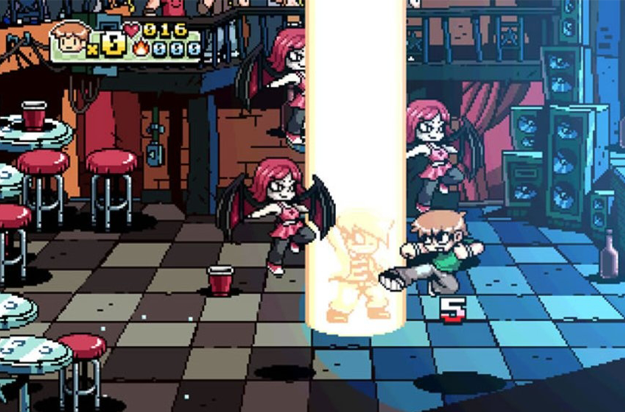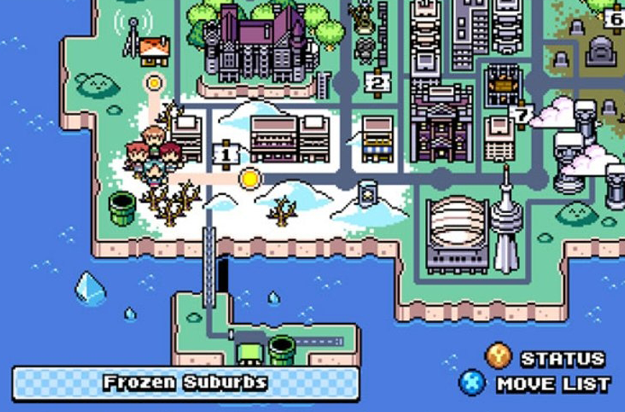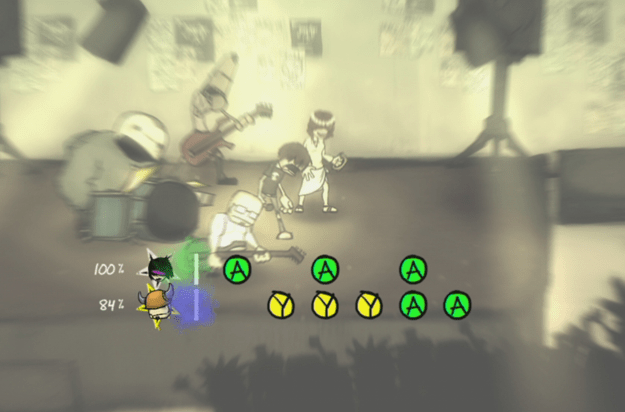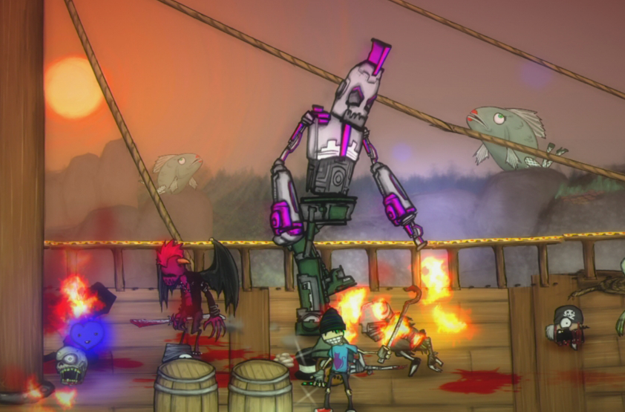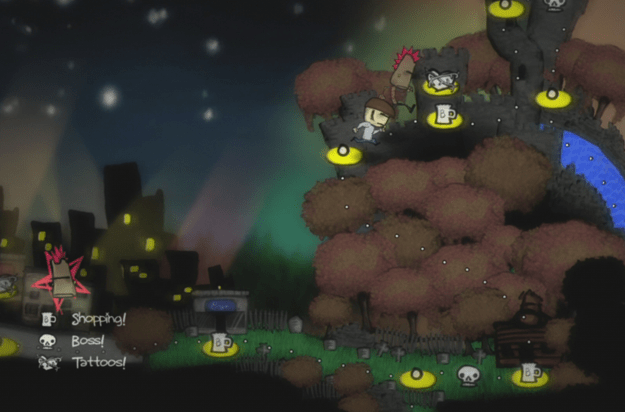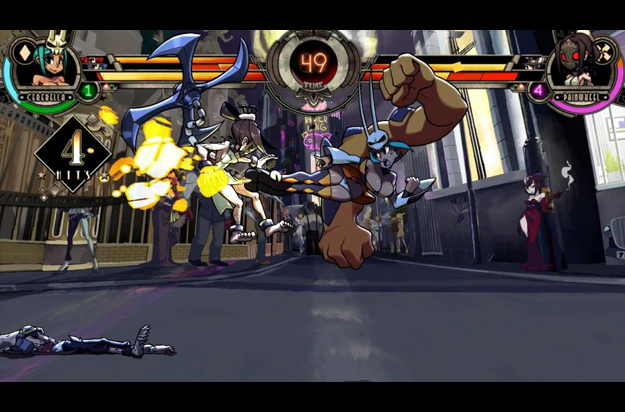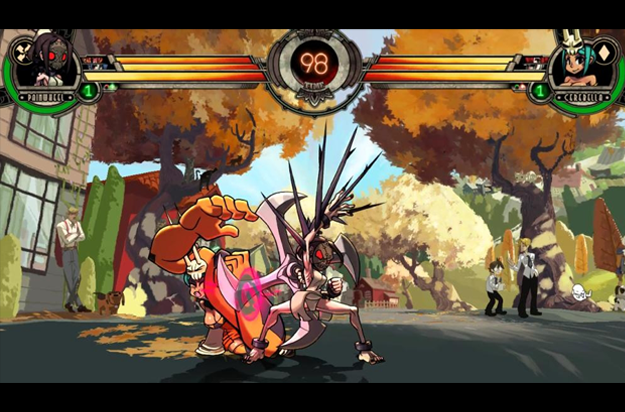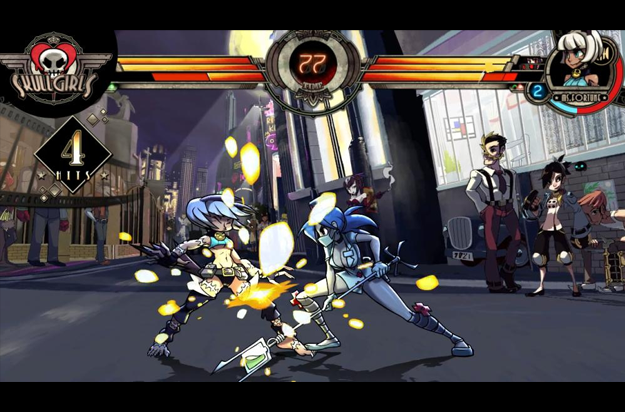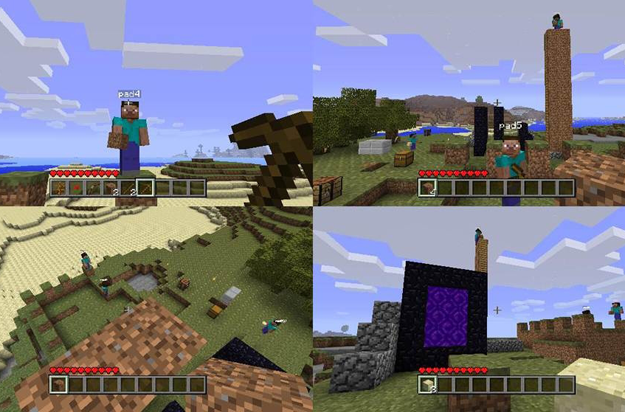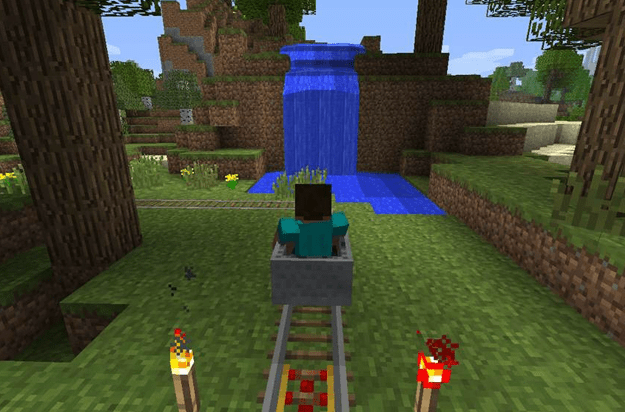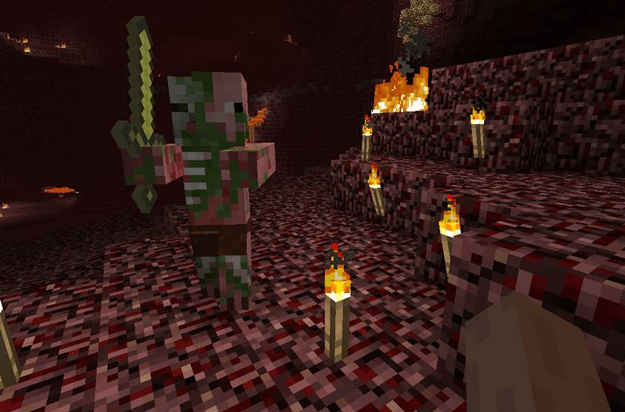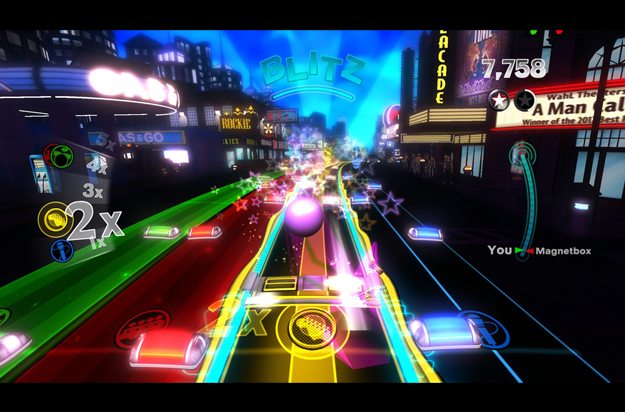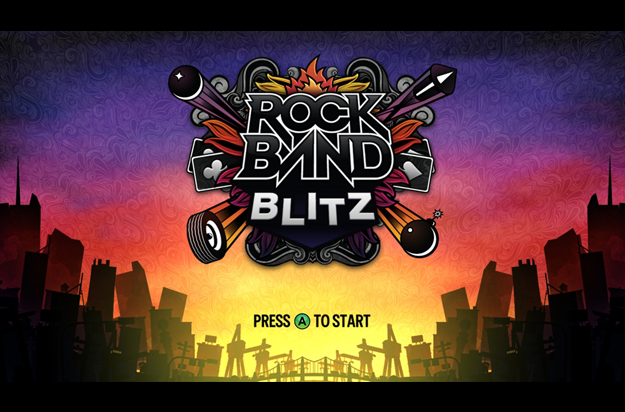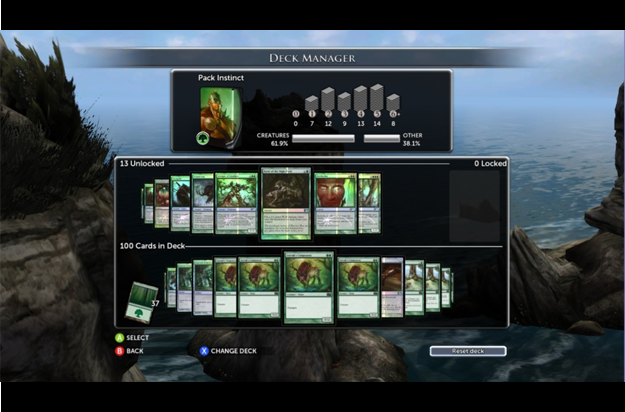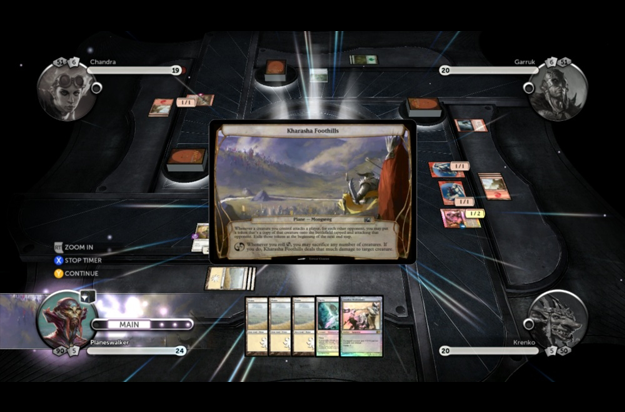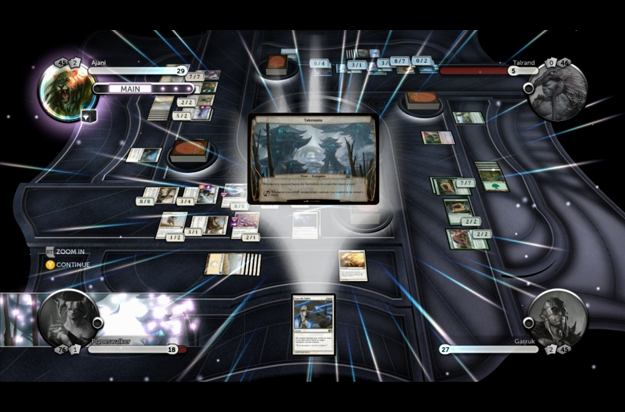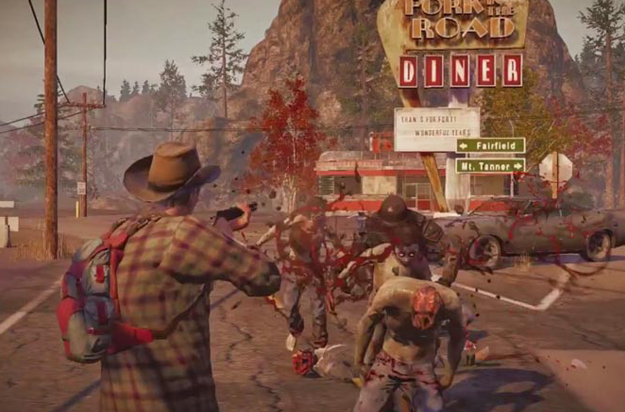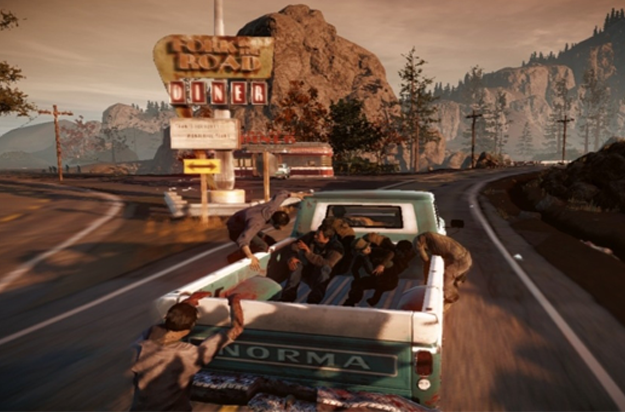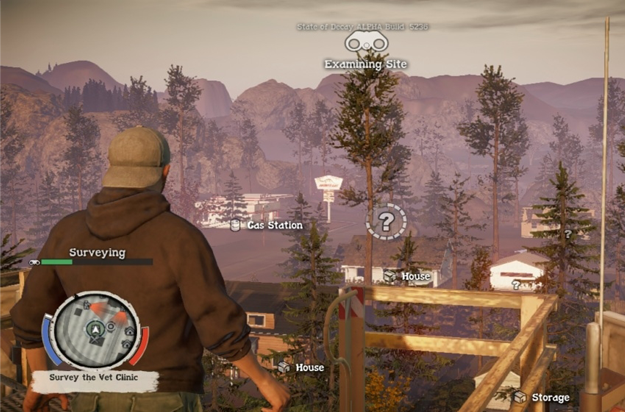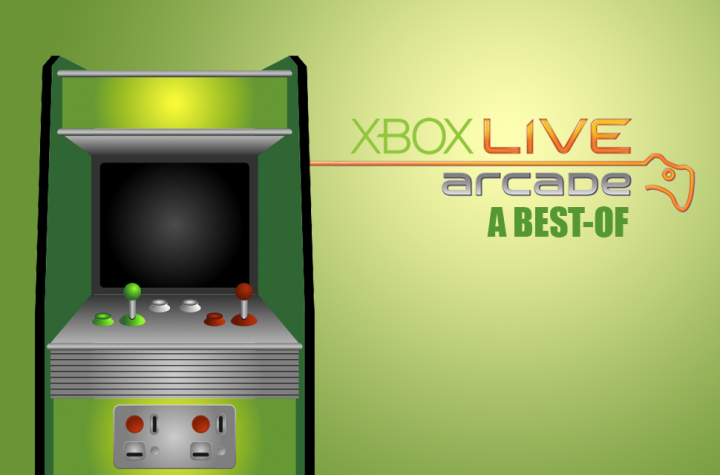
The Xbox Live Arcade now boasts more than 600 titles from independent and major game developers alike, ranging in cost from nothing on up (prices frequently change), and capping size limits of more than 2.5GB. Many of them are still the classics we know and love, or re-envisioned versions thereof, along with a formidable host of burgeoning new hits like Castle Crashers and the sandbox phenomenon known as, you know, Minecraft. Unfortunately though, there’s also a copious amount of downright awful titles. No one should have to play a game produced by a company known for its seasoned tortilla chips. No one.
Here are our picks for the best Xbox Live Arcade Games so you can avoid sifting through hoards of egregious titles. They may not be as elaborate, eye-catching or renowned as modern blockbuster classics like Call of Duty and Halo, but they won’t cost you a whopping $60 either. Also, check out our expansive selection of the best Google Chrome games, the best free PC games and the best PSN games if you’re in need of a few more extracurricular activities for your downtime.
Role playing
DeathSpank — $15
Game designer Ron Gilbert has shown an (often) amusing knack for interactive story telling given his previous work on the first two Monkey Island games and Maniac Mansion. DeathSpank has a similar satirical air about it, throwing players into the role of the game’s protagonist DeathSpank and his unrelenting question for an ancient artifact, but it’s more hack ‘n’ slash than brainteaser. The action RPG is loaded with wit and loot, and savage unicorns, all set against a vividly gorgeous backdrop of 2D and 3D animation. Questing can be rather tedious given its stereotypical formula, but the evolving gameplay and Gilber’s iconic humor keep it all afloat amid the few drab moments.

Crimson Alliance — $15
We aren’t going to lie, Crimson Alliance can be shallow in many respects. Whether it be the uninspired gameplay, the generic three-class system, or its feeble attempt of humor, it comes of as a sub-par knockoff of the more renowned and robust titles currently flooding the market. However whittled down its core may be though, the mere fact the title offers online and local co-op helps add a much-needed social element often lacking in RPG industry. Once connected, four players can simultaneously don the role of either a wizard, assassin or mercenary — each with its own skill set — and traverse the Crimson Empire in search of ways to upgrade their loot and eradicate the armies of darkness. Sound familiar?

Bastion — $15
When Bastion burst on the scene in 2010, the hack-and-slash RPG was noteworthy for its compelling story, awesome narration, and gorgeous hand-painted environments. The game hasn’t changed much since, not that it needs to, allowing players to take on the role of “The Kid” and traverse a floating world edging ever closer to complete oblivion. The crumbling world of Calamity is rich and compelling, loaded with dark secrets and ferocious beasts, and stacked to the brim with a slew of upgradable weapons at your disposal from the get-go. The original score is also one of the most finely-crafted musical journeys of any indie title to date thanks to first-time game composer Darren Korb. Again, dig that narration.

Torchlight — $15
The notion that games must often break new ground in order to be considered great is an unfortunate one — one players must look past in order to truly appreciate Runic Games’ Torchlight. The title sports similar gameplay and the isometric perspective akin to Diablo, but it does so with several refining characteristics and modern twists, carrying the player through a series randomized dungeons beneath an old mining boomtown infatuated with a magical ore known as Ember. The usual RPG classes are all present (i.e. a warrior, mage, and thief), the world details vividly colorful, and there’s enough variation among baddies and loot that it never seems overly redundant. The drawback? It’s only single player.
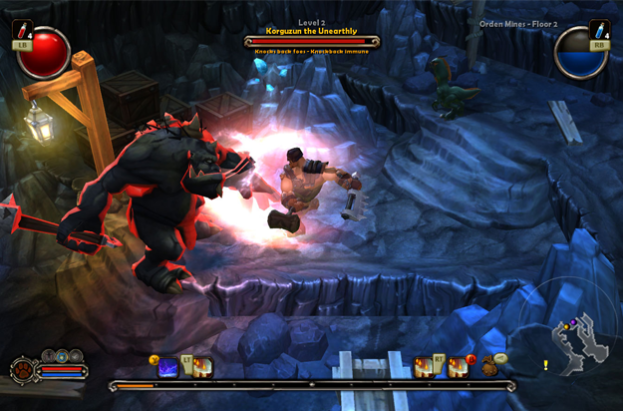
Castle Crashers — $15
Not only is Castle Crashers one of the best games on the Xbox Live Arcade, it’s also one of the best games on the Xbox 360 period. The side-scrolling game, set in a fantastically absurd medieval world of mysticism and magic, follows four knights on their quest to reclaim a stolen gem and an abundance of princesses from a dark sorcerer hellbent on power and world domination. The plot is simplistic, but the title shines in its character progression, varied game modes and a quirky sense of humor that remains authentic and wildly entertaining from start to finish. It’s challenging, whether playing alone or with up to three others, while offering fresh, cartoonish visuals in the same vain as The Behemoth’s previous title, Alien Hominid.

Action and adventure
The Walking Dead — $5
Sure, Telltale Games built its initial foundation on family-friendly affairs like Monkey Island and Back to the Future, but its five-part episode on Robert Kirkman’s award-winning zombie series is where the company has found its true calling. The storyline is gripping and compelling, centered on convicted criminal Lee Everett and the events foreshadowing the story of Deputy Sheriff Rick Grimes, with an intricate plot dictated and tailored by the player’s actions and various decisions within the world. The fixed camera angles sometimes prove to be a nuisance, but the game’s stunning, cell-shaded looks still make the apocalyptic environments seem quite appealing.. err, as appealing as the undead are capable of being anyway. See our comprehensive Walking Dead game, Season 1 review for a closer look.

Heavy Weapon — $10
I wasn’t around for Moon Patrol’s 1982 debut, but I’ve heard PopCap’s latest side-scrolling shooter dons some uncanny resemblances. With Heavy Weapon, players control an atomic tank using two joysticks, warding of the Red Star army through 19 action-packed levels in true, arcade-style action. You begin with a basic cannon, upgrading your weapon arsenal to include lasers and homing missiles along the way, while continually striving toward the iconic nuclear blast that eliminates all enemies on the screen. The game is challenging, regardless if you’re playing alone or with others, and adorned with cartoonish graphics reminiscent of Worms or my personal favorite, Metal Slug. If the main mission mode isn’t daunting enough, give the chaotic survival mode a whirl.

Shadow Complex — $15
While it’s true Metroid and Contra are no longer the 2D powerhouses they once were, they undoubtedly left a profound imprint on generations of games to come. Shadow Complex is a fine example of that former gameplay, a shooter deeply rooted in an arsenal of power-ups, color-coded doors and vast exploration that will keep you running for hours on end. However, the old-school feel only delves so deep, as the title is bolstered by new-age, 3D graphics and futuristic flourishes courtesy of the powerful Unreal 3 Engine. The plot? Your girlfriend has been captured and held hostage in an underground complex by a band of revolutions planning on carrying out a violent government coup in the near future.

Brothers: A Tale of Two Sons — $15
Swedish film director Josef Fares’ first foray into the world of video games is a shimmering, gut-wrenching narrative powered by one of the most beautifully conceived worlds we’ve ever seen. The visual design is simply gorgeous, a stark contrast to heavy elements driving the underlying plot, but they merely serve second to the unique controls and simple inputs. Although Brothers is a single player game, each joystick and accompanying trigger controls a different brother, meaning you’re required to simultaneously maneuver each character individually. Fortunately, it becomes easier as the game progresses, making the game’s many puzzles and challenging tasks that much more achievable. Check out our Brothers: A Tale of Two Sons review for more details.

Aegis Wing — Free
There’s always some impending invasion waiting to wipe the human race off the face of the galaxy. With Aegis Wing, that invasion comes in the form of the Araxian, an alien colony on the verge of attacking the newly-settled planet Europa. Although the single-player game is worth the download alone, the cooperative gameplay via Xbox Live is where the heart of the title lies, allowing up to four players to take control of fleet of intergalactic ships in a side-scrolling journey to rid space of enemy forces. Power-ups are frequently scattered through out the scrolling levels, as are lengthy boss battles, and multiple players can even combine their ships in Transformers-like fashion for a more cohesive attack. Just keep your fingers crossed your ally knows what he or she is doing if playing Insane mode.
Sports and recreation
Pinball FX 2 — $10
Nothing will ever rival the pure enjoyment that comes from button mashing and frantically rattling a good ol’ fashioned pinball machine, but Pinball FX 2 is likely the closest you’ll come. Awash with a sea of colors and brightly flashing lights, the title features some of the most realistic and accurate pinball physics of any virtual pinball game to date, whether playing solo or vehemently tackling players via Xbox Live or the using the built-in, split-screen support. The multiplier options are vast and engaging, as are the comprehensive leaderboards, and the game comes loaded with enough table variety at launch you shouldn’t have to purchase additional tables for some time. Now if only they offered the Mars Attacks edition.

Motocross Madness — $10
There are truly few games that appeal to all ages and demographics in the way Motocross Madness does. Although the latest title in the franchise is plagued by minor graphical details and lack of visual variety, it’s also the most expansive and feature-rich to date, offering nine multi-path courses and a bounty of multiplayer game modes. The graphics are a bit of a trip due to the realistic textures siting alongside the cartoon-y avatars, but the visuals are still lush and coupled with a surprising amount of depth, no matter if you’re engaging in straightforward racing or exploring every nook and cranny of Iceland in search of treasure. It has a good deal to offer for $10, especially when you factor in the showboating mode and eight-player online capabilities.

Hydro Thunder — $15
I remember the glory days of Hydro Thunder with vivid nostalgia. It was the kind of ’90s arcade classic you’d dabble with in between movie hopping or during a short trip to the mall with your mother. The Xbox Live Arcade version boasts many of same features — the rocket-powered jet boats, the dynamic water physics, the unavoidable sea serpents — while adding a couple new game modes and swapping out the former levels for a string of updated courses. Although maneuvering can prove difficult at times due to the game’s flawed physics, it’s still engaging, especially when taking on seven other players online.

NBA Jam: On Fire Edition — $15
Although I could spend the next 150 words rambling on about the hallmark merits of NBA Jam: On Fire Edition — the razzle-dazzles, the boom-shakalakas, etc. — I could never sum it up with the matching eloquence and and blunt reality of IGN‘s Tristan Ogilvie.”If you take a bowl of fruit, boil it down to chunks of pulp and add a little sugar, you get jam. Similarly, if you take the sport of basketball, boil it down to chunks of dunks, douse it in kerosene and set it on fire you get NBA Jam, arguably the greatest arcade sports series in the history of awesomeness.” It’s a bit of hyperbole, but Ogilvie is right in many ways. The latest edition in the recently-revamped arcade franchise sports a hodgepodge of unlockable content, fluid animations, improved game modes and plenty of Tim Kitzrow’s iconic commentary to go around.
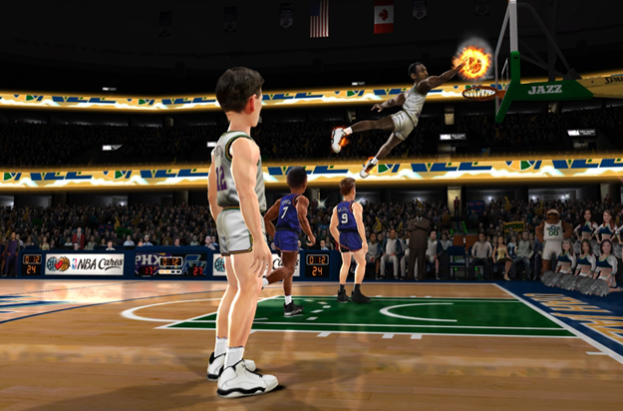
Trials Evolution — $15
Trials Evolution came as a personal recommendation from several co-workers in the office, one of whom’s recommendations I remain skeptical about (he told me to the Doritos play for Christ’s sake). Thankfully, the manic, physics-blazoned motocross title offers terrific, 50-track single player career and the kind of real-time multiplayer anyone can pick up and enjoy regardless of skill level. The visuals and controls are remarkably crisp, the stunt bar at an all time high, and the intuitive level creator allows players to easily build and share new courses with players from around the globe. The end-game is absurdly difficult, but the learning curve is gradual enough you won’t be taken aback immediately. It’s no Excitebike, but then again, we aren’t complaining.

Shoot ’em up
Doom — $5
Doom revolutionized PC gaming upon its 1993 debut and the Xbox rendition of the classic is just as faithful, and pixelated, as the former. It follows a lone, unnamed marine stationed on one of Mars’ moons when a military experiment goes awry, leaving the soldier with no alternative other than dismantle an overwhelming legion of monsters in his quest for freedom. The favorite telltale weapons of the momentous FPS remain intact, bringing back old favorites like the BFG 9000 and chainsaw, but the campaign has been expanded with a fourth episode released after the original as part of a deluxe edition. It’s challenging, but there’s always the frantic, four-player online competitive mode if you somehow manage to stumble through the game on the “ultraviolent” difficulty.

Battlefield 1943 — $15
Let’s face it, no one buys a Battlefield title strictly for the campaign. The multiplayer is where the FPS thrives, bolstered by an incredibly addictive gameplay mechanics and a well-proven, balanced class system featuring a standard infantry unit, an antipersonnel scout unit and a long-distance rifleman. The three Pacific-clad maps are dynamic, though rather outdated at this point, but the tanks, planes and the rest of the game’s vehicle arsenal add greater depth and strategic advantage to an otherwise simple and incredibly lean shooter. Keep in the mind the game is built purely for multiplier (there’s no single-player campaign to speak of), simultaneously pitting two teams and up to 24 players against each other in varied WWII-era campaigns under a stringent set of victory conditions.
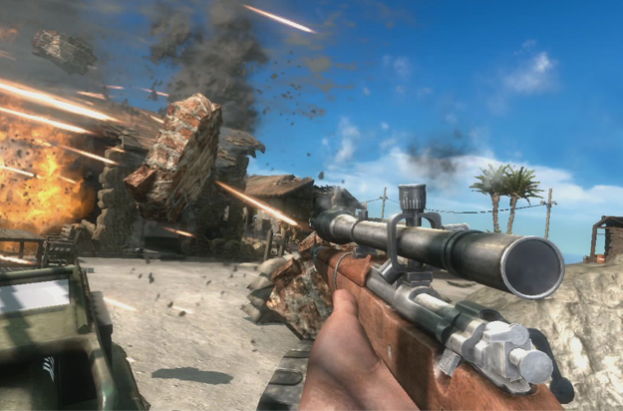
Counter Strike: Global Offensive — $15
If you don’t already know by now, Counter Strike is considered one of the defining pinnacles of online, team-based shooters. The skill-based title has remained evolutionary immune to an ever-changing game genre, reveling in permanent death and a lack of modification, while offering it’s borderline-cult players an entirely different way of playing. However, Global Offensive does exhibit a few welcome tweaks and notable additions that should keep even the most seasoned players on their toes. Maps have been modernized and added, along with game modes like Arms Race, and the title now boasts an astonishing 45 available weapons in addition to its robust leaderboards and awards. Remember, people don’t play Counter Strike for the visuals — they play it for keeps. Seriously.

Geometry Wars Evolved 2 — $15
Not all shooters are reserved for first-person, run-and-gun gameplay and chaotic online multiplayer. Geometry Wars Evolved 2, Bizarre Creations’ retro-seared sequel to the mini game first bundled in Project Gotham Racing 2, tops the original in almost every aspect, albeit still with a lack of online multiplayer. The game has a very Galaga-esque feel to it, ushering players to destroy never-ending, incoming swarms of enemy shapes using their claw-shaped geometric vessel and right joystick. Although there are five new modes catering to different gaming styles, the primary goal is to survive and rack up as many points as possible, whether flying through the vivid and bright single-player mode or battling the relentless hordes of shapes alongside your buddy.

Sine Mora — $15
It must be difficult to imprint a memorable mark in a field so heavily saturated with as many classically-inspired, horizontal shooters as our own. Fortunately for Sine Mora, it’s utilization of time manipulation and brutally-honest storytelling make a trip worth taking. The challenging game is centered around a group of humanoid animals akin to Star Fox and Co., but it contains more mature themes (and swearing) than Nintendo ever could. Players must navigate through a beautifully-rendered, diesel-punk airspace of Seol — laden with enemies, power-ups and intimidating boss battles — but survival relies more on a time component than your stereotypical health bar. Case in point: destroying enemies will buy you more time while receiving blows will adversely shorten your lifespan.
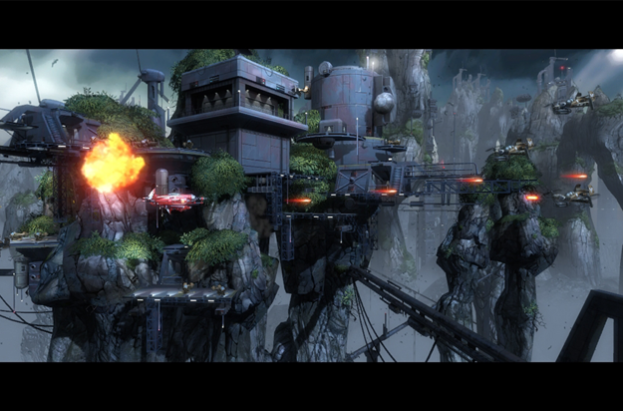
Puzzle and platformer
Super Meat Boy — $15
Super Meat Boy is virtual proof old-school game mechanics and shimmer die hard. Not in the Bruce Willis-John McClane sense of the phase, but in terms of the staggering number of 2D levels available in which you purely run, jump and squander your way to the top. Though the controls are simple and straightforward, the variety of levels and numerous obstacles make for wide-ranging gameplay that is both utterly time-consuming and altogether infuriating given its sheer level of difficulty. Still, homages to the classic platform titles of yore run amok amid the salt factories and hospitals, subsequently reminding you of why the genre endures. The cut scenes are crudely hilarious, the animation pixeltastic and the chiptunes top-notch. And then there’s the fact you play as a rancid cube of meat.

N+ — $10
Who says a good platformer needs a complex, thought-provoking storyline or robust gameplay features? N+, the console port of the Adobe Flash-powered N, is a remarkably plain-sailing title that allows players to do little more than run, jump and showboat your ninja skills on more than 400 individual levels. There’s no backstory, other than you’re a ninja with a thirst for gold like a pirate, but it still delights in its expansive leaderboards, achievements and local multiplayer with a dully-colored finesse. Levels are merely completed by flipping a switch and exiting through a door, but you’ll undoubtedly get derailed by the numerous enemies and intricate puzzles along the way. Don’t worry though, you can always fall back on the custom level editor when you’re on the brink of pulling your hair out.

Limbo — $15
Few trials are as somber, cerebral, and eerily beautiful as the one the young boy faces while in Limbo. It’s there, in the uninviting white-and-black nether regions of a dream-like landscape, where players must trod down a dark with no answer or direction. Despite the lack of context, the game’s visuals and phenomenal sound design perpetually thrust you through the title’s three-hour duration, offering a bevvy of clever puzzles and looming, ambiguous hurdles around every corner. It’s executed in such a manner that makes you cautious and extremely apprehensive about the world around you, and though short, there are enough hidden elements and rewards to warrant a second romping. Still, it will always leave you wanting more.

Braid — $10
It’s hard to account for all the philosophical ruminations and thoughts swirling around Braid. Yes, in a way it’s your standard save-the-princess platformer in the vein of Mario, but it’s also driven by a peculiar story and unique gameplay mechanics that rival titles beyond the game’s water-colored, 2D animation. Players must ultimately run and jump through a series of worlds, collecting puzzle pieces telling of protagonist Tim’s woeful regrets in the process, while solving admirable puzzles adrift in sea of melancholia and moody background music. Additionally, Tim possesses the ability to reverse time, allowing players to wash away their literal pitfalls and poor precision decisions moments after they occur. If there ever were any doubts regarding how talented rising indie developers are becoming, Braid will provide the answer.
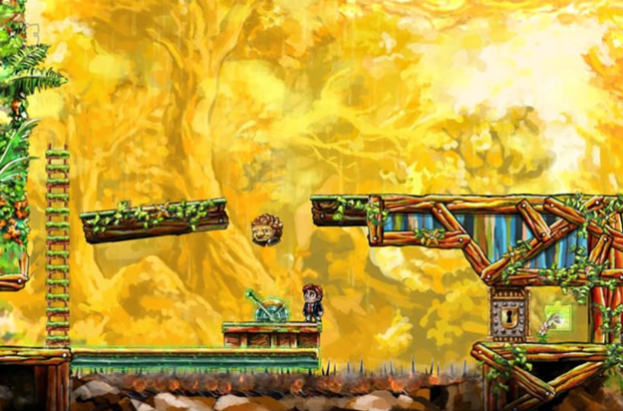
Fez — $10
A new perspective can make a world of difference, especially when that perspective comes in the form of a third dimension attainable through a magic hat. With Fez, players don the role of a sprite named Gomez, tackling a series of puzzles and obstacles built within a crumbling 2D environment that can quickly be flipped on a vertical axis at any given moment. The game is visually stimulating, serene and sprawling — no matter if you’re traversing towering ivy-clad buildings or trudging through dimly-lit halls — and the accompanying music is finely crafted to fit any scenario you may encounter as you search for various cubes scattered across the world. The puzzles can be exceedingly tough, but the world-turning novelty offers a welcome spin that’s impossible to ignore (metaphorically and literally). Check out our Fez review for more.

Fighting
Street Fighter III: Online Edition — $15
If you’ve player any of the Street Fighter game in the last 15 or so year, you’ve pretty much played Street Fighter III: Online Edition in a way. Featuring essentially the same sophisticated fighting system and retro-arcade feel, it’s not a tremendous leap for the genre or franchise in general, but the coupled graphics overhaul and newly-implemented Trials and Training modes make the title far more accessible than the original. The online mode is just as challenging as you might expect, not to mention surprising lag-free, and offers a convenient way to play against other players should you reach the skill level that immediately deters all your friends from playing against you. Additional customization options allow for in-game rule tweaks, while experience points ensure you’re not always getting slaughtered online.

Marvel vs. Capcom 2 — $15
When Marvel vs. Capcom 2 burst on the arcade scene more than 12 years ago, it utilized the same tried-and-true formula of its predecessors, focusing on engaging fighting dynamics and host of familiar characters from the two respective universes. The single-player mode boasts the mainstay Arcade, Training, and Score Attack modes, while multiplier options include both local head-to-head matches and a ranked, online play. The game has yet to receive the HD treatment, but the 56 characters still look visually crisp and polished, with a framerate capable of holding up under the most rigorous of combos. The six-person, tag-team matches remain one of the best aspects of the game, and though not absolute, helps answer the age-old question: who would win in a fight, Spider-Man or the Hulk?

Scott Pilgrim vs. the World — $10
You’ve probably read Bryan Lee O’Malley’s graphic novel, Scott Pilgrim, or at least seen the novel movie adaptation thereof starring Michael Cera. The 8-bit title of the same name follows musician Scott Pilgrim’s escapades to win the love of his life, Ramona Flowers, in a benevolent battle against each of her seven evil exes. It’s a humorous side-scrolling brawler, chock full of wacky enemies and equally-absurd moments, while offering three different playable characters laden with their own set of skills and personal upgrades purchasable through coins and experience. For whatever reason, the game lacks online and drop-in co-op play, but there are still enough rollicking chiptunes and wavering nostalgic touches to keep you glued to the screen from beginning to end.

Charlie Murder — $15
Band rivalry has probably existed for as long as, well, as long as bands likely have. With indie-developed Charlie Murder, players must haphazardly tackle rival death metalers Gore Quaffer and the legion of evil resulting from the guitarist’s pact with devil. The game’s stylish design and punk-rock nuances make it a standout, as does the fantastic local or online multiplayer, and there’s plenty of characters to choose from and special abilities to earn to make it a game with high replay value. It’s an arcade throwback, but it’s also bolstered by RPG elements and other genre components, slinging button-mashing mini games alongside guitar-wielding battles and surfing excursions. Plus, there’s enough gory details, beer-related loot and cellphone tutorials thrown in a mix to prevent it from being anything but original. Rock on.

Skullgirls — $15
With Skullgirls, it feels as if art designer Alex Ahad took everything my mother hated about Japenese fighting games and compounded into one, unassuming title. The hand-drawn, HD renderings are vivid and lush, teeming with color and fluid animations, but many will find the hypersexualization of the cast to be rather insulting and misogynistic. It’s an unfortunate case though given Skullgirls’ sports a superbly-crafted and face-paced fighting system, along with comprehensive tutorials that lay the fundamental groundwork for playing the game. Each of the game’s eight players perform distinctly, with varied combos and individual dynamics, and the ability to play as many as three characters in any one match provides subtle nod to games like the aforementioned classic, Marvel vs. Capcom 2. Now just look beyond the short skirts and busty bosoms.
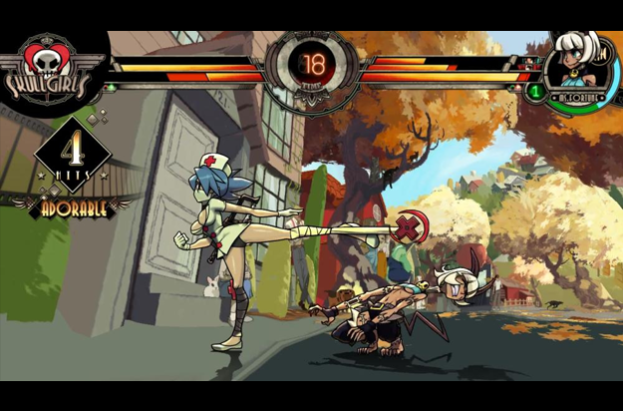
Strategy and simulation
Minecraft — $15
Minecraft is a game in need of little introduction, and though the Xbox version is a leaner rendition of the smash-hit PC title, the virtual sandbox still holds it’s own on the console. Like other ports, the Xbox title drops the player in a randomly-generated environment, ushering him or her to create a world only limited by one’s own imagination and creativity. Though there are end-game goals you can strive for, the game really doesn’t have a point aside from building things in the block-y, yet surprisingly alluring, virtual world. The Xbox version doesn’t offer the kind of robust modding found on the PC rendition, nor is it quite as expansive in general, but the multiplayer options and updated crafting interface make it well worth the $15. Oh, and monsters come out at night. So there’s that..

Rock Band Blitz — $15
Rock Band Blitz is a different breed of rhythm game than the guilty pleasure title everyone secretly loved a mere four years ago. Instead of Rock Band’s iconic plastic instruments and raucous multiplayer, Blitz opts for single controller and heightened focus on leaderboard supremacy. Like similar titles in the franchise, players are presented with a capricious, scrolling fretboard featuring a slew of notes corresponding to different buttons on the controller. The goal is to continually press the appropriate buttons when they hover over a particular region, thus garnering a multiplier and boosting your score. The graphics are just as eye-catching as they ever were, with bright light trails and humped ridges for all 25 songs, but sometimes they can be a little straining on the eyes. I guess it’s a good thing you know all the words to Kelly Clarkson’s “Stronger (What Doesn’t Kill You)” by heart isn’t it?

Magic 2013 — $10
Many people consider Magic to be the stuff of nerds, a card game played within deep, dark basements where average Joe don’t dare wonder. However true that may be, Magic 2013 is still persistently enjoyable if you revel in all things fantasy-related and don’t mind shuffling through the title’s ten customizable decks. The concept of Magic is relatively simple for the most, pitting two players against each other or up to three in Planechase mutliplayer format, while offering a host of beautifully-illustrated cards used to attack your opponents and drain his or her health points. The 2013 edition doesn’t deviate much from its predecessors, aside from a few minor tweaks such as mana tapping, but the improvements offer a welcome set of refinements and unlockables accessible in the single-player campaign or through the online multiplayer.

State of Decay — $20
It’s hard to argue a zombie apocalypse wouldn’t have its fair share of harrowing problems. Whereas most survival horror games revel in unlimited ammo and fixed settings, Undead Labs’ astonishing first effort is a game rooted in actualities and stats. It’s a vast, open world of hopelessness, highlighted by permanent death and fixated on suspense. Although there is a host of weapons constantly available at your disposable, they’re prone to harsh realities that often leave you mercilessly exposed. Your weapons and equipment may break at any moment, whether using a bat or the silencer on your rifle, but it always is one of the most disheartening experiences when it occurs. Although the mechanics can be flawed at times, the visuals and compelling gameplay are bloody enough to place it among the best zombie titles to date.

Plants vs. Zombies — $15
The newest installment of Plants vs. Zombies may be free-to-play, but the original will still cost you a whopping $15. However, how can you resist that innate urge to combat hordes upon hordes of undead zombies with a cornucopia of peashooters and cabbage-pults? Like it’s sequel, Plants vs. Zombies is a strategy-based tower defense game in which the player continually fends off waves of approaching enemies with a set of tactically-placed plants. The animation and graphics are not stunning, though they are littered with PopCap’s signature amiableness, and there’s enough additional unlockables available via Crazy Dave to keep your gameplay strategies diverse and constantly in limbo. However, it’s still no Plants vs. Zombies: Garden Warfare.


